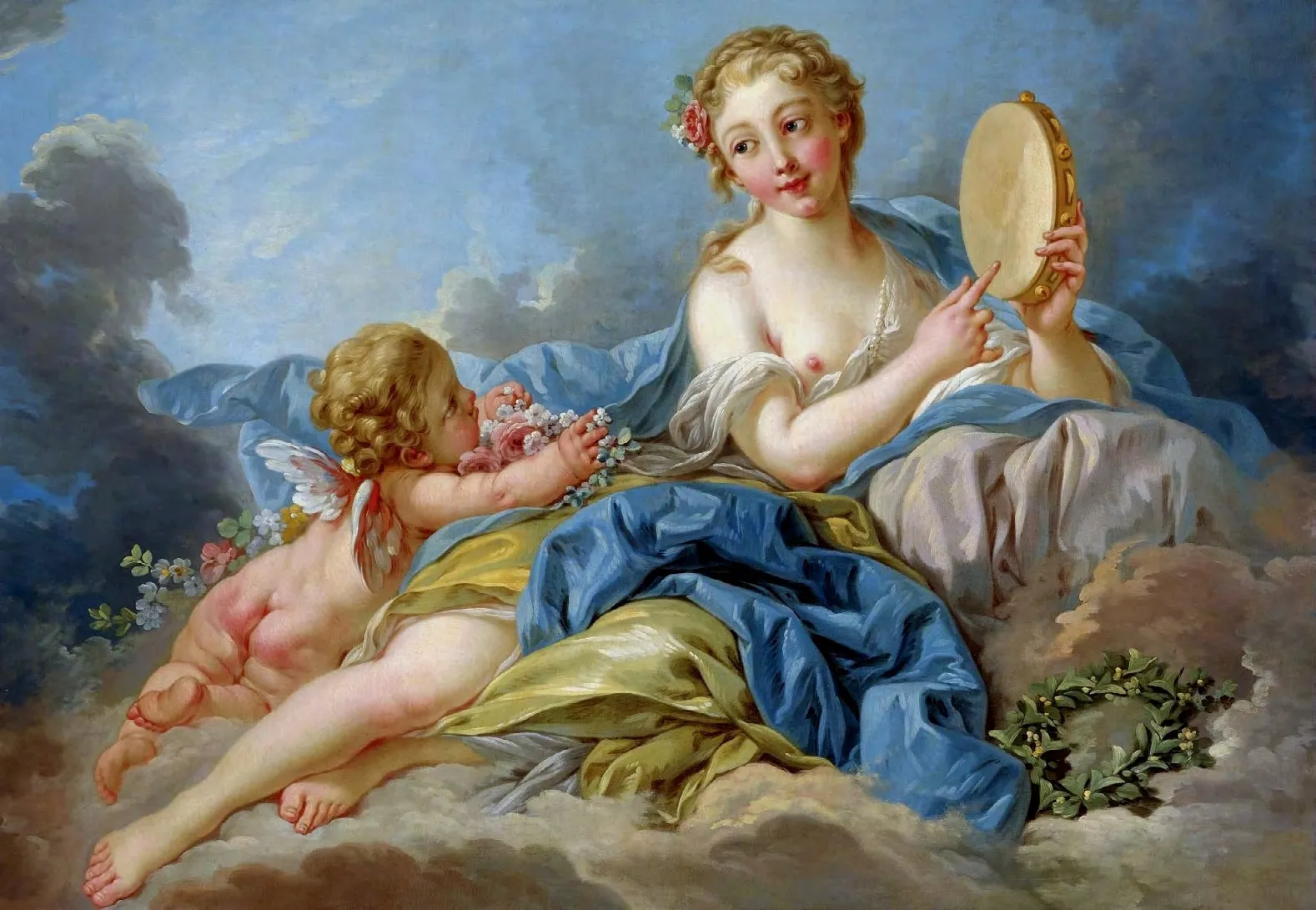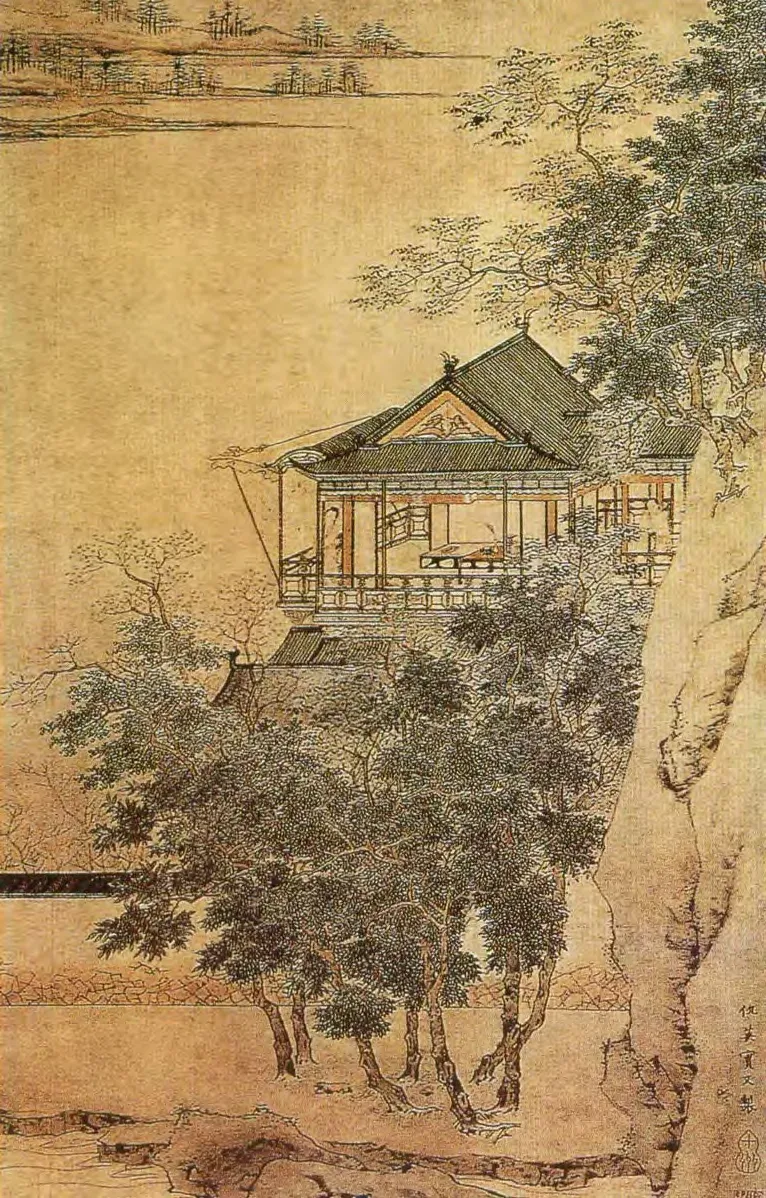Musings on the Human Form
2018-04-10ByJiangXun
By Jiang Xun
Since the times of Ancient Greece, the human figure has been a never-ending theme in the artistic creations of the Western world. Two nude sculptures, Apollo and Venus, which are collected in the Vatican Museum and the Louvre respectively, have laid the foundation for the creative works of western fine art academies dating back more than two thousand years.
Is the unclothed human body truly beautiful? It seems that the question has been talked about and debated incessantly throughout the long history of Western art.
But why is it that the topic has never been discussed or even raised in Confucian-centric Eastern art?

[法] 欧仁·德拉克罗瓦 《自由领导人民》Liberty Leading the People by Eugène Delacroix [France]
In the beginning of the nineteenth century, around the time of Napoleon, the Imperial College of France often used nude figures—particularly female ones—in their artwork to symbolize abstract philosophical concepts, like freedom, liberation and democracy.
In 1830s, Eugène Delacroix, a French Romantic artist, painted his famous masterwork,Liberty Leading the People, that featured a half-naked, bare-breasted woman waving the flag of the French Republic, symbolizing the people’s pursuit, longing and striving for freedom and democracy.
Freedom is totally abstract,yet the female body is concrete.Apparently, Western artists tried to inspire the public by virtue of implanting this abstract ideology into the concrete female form.
This famous painting so oftadmired by visitors to the Louvre has shaped the whole of French society. And I couldn’t help but wonder, did the public truly value the abstract concept of “freedom”that the painting intended to convey, or were they simply affected by the nude female figure,or both? The answer could be rather ambiguous. However, such an ambiguity between abstract thought and the concrete human form is not likely to exist in Confucianism.

明 戴进 《踏雪寻梅图》Savoring the Plum Blossom on a Snowy Day by Dai Jin, Ming Dynasty
从希腊开始,西方文明一直以人的裸体作为美术的创作主题。收藏在卢浮宫等博物馆的阿波罗、维纳斯的裸体雕像,长达两千年,一直是西方艺术学院美术创作的基础。
身体,没有衣服遮盖的肉体本身,可以是美的吗?西方漫长的美术史,似乎一直在探索这一问题。
为什么在东方儒家文化主导的美术里,从来没有提出和面对同样的议题?
19世纪初,在拿破仑执政前后,法国宫廷学院的美术,常常以裸体(特别是女性裸体)来象征抽象的哲学概念,像“自由”,像“解放”,像“民主”。
19世纪30年代,浪漫主义的德拉克洛瓦,画过一幅著名的《自由领导人民》。画面中央就是一位半裸体、露出胸部的女性,手拿法兰西共和国旗帜,象征民众对自由民主的追求、向往与奋斗。
“自由”是很抽象的一个概念,但是,女性身体非常具象,好像西方文明要把抽象思维转换成具象的肉体,才能煽动起大众的热烈情绪。
看着卢浮宫里这幅影响整个法国社会的名画,我在想,民众从画里得到的究竟是对“自由”抽象概念的信仰,还是对女性裸体的感动,中间界限好像并不十分清楚。这种抽象思维与具象肉体的暧昧性,在儒家文化中,几乎不会发生。
儒家的道德精神信仰诉诸文字,明明白白用汉字书写成“自由”“民主”“解放”,不会假托一个女性裸体的肉身来表现。裸体,尤其是女性裸体,在儒家文化里,几乎等同淫秽罪恶。
我们对肉体如此陌生,又对肉体充满好奇,充满“偷窥”的欲望。主流文化里看不到“肉身”的描述,“肉身”沦落在被主流文化视为败德、罪恶的角落。
两岸故宫的绘画,看不到太多的“人”,更看不到赤裸的“肉身”,没有肉身的绘画,也没有肉身的雕刻。一个数千年的文明,“人”的价值,只是抽象的思维,不曾在视觉上具体存在过,也无法在肉身的细节上被议论或思考。

[法] 弗朗索瓦·布歇 《女神埃拉托》 The Muse Erato by François Boucher [France]
The Confucianists conveyed their moral and spiritual beliefs through the use of Chinese characters. For example, they would write down the words like“freedom”, “democracy” and“liberation” plainly to denote the meaning, rather than through the vehicle of a nude female figure. In Confucian culture, a nude figure,especially a nude female figure, is almost analogous to obscenity and sin.
The female body is both a novelty and a curiosity to the Chinese, who often have an unspeakable desire to see it “with their own eyes.” Yet such images are rarely found in mainstream Chinese culture, as they have been relegated to the dark and seedy corners on account of the fact that they are deemed immoral and evil in mainstream society.
In the National Palace Museums located in Beijing and Taiwan, you won’t find many figure paintings, let alone nude paintings or carvings. In the thousands of years of Chinese civilization, the human body has never had tangibility, let alone visibility, but has only existed in the collective mind’s eye of the Chinese people as an abstract concept, and thus, cannot be further discussed or contemplated in detail.
After the Song and Yuan Dynasties, landscapes began to edge out figures, and “human forms” in those paintings have gradually diminished into something insignificant, muted,faceless, and unidentifiable; a mere decoration whose existence nearly fades away among the mountains and rivers.

明 仇英 《江楼远眺图》A View of the Tower on the River Bank by Qiu Ying, Ming Dynasty
宋元以后,山水绘画取代“人物”的描述,“人”只是千山万水的大自然里,一个渺小苍凉、没有五官、没有爱恨、不容易发现的存在。
山水画里的“人”,只是一种升华的意境,意境很高,并不是真正实存的“肉身”。
西方到了19世纪,美术上,人的身体,如惊涛骇浪,风起云涌。一代一代的画家,推陈出新,不断颠覆旧有的身体造型,不断创造思考新的身体存在的可能,造就每一个创作者,以全新的方式观看身体、记录身体、思考身体的各种可能。
人的生命价值,通过具象的真实肉身的描述,在充满艰难、挣扎、狂喜、剧痛、高贵或卑微——形形色色的肉体的处境中,得到毫不遮掩、毫不隐讳的探索。◆
(摘自《肉身供养》现代出版社)
The figures in a landscape don’t represent any specific human form, but are merely the sublime conception of the high-minded artist.
However, in 1800s, wave after wave of artistic works depicting the human body sprang up all over the Western world.Generation after generation of Western painters, intent on both blazing new creative trails and leaving their indelible mark on the medium, overturned the existing art styles and brought forth novel ideas with which to explore new forms of expression of the human body. Since then, Western artists have begun to see, record and think about all the possibilities of the human body from new perspectives.
Therefore, the meaning of life, expressed via different kinds of depictions of the human body, exists in an environment intermingled with hardship,struggle, ecstasy, agony,nobility and humility, and has been explored in a direct and straightforward manner.◆
